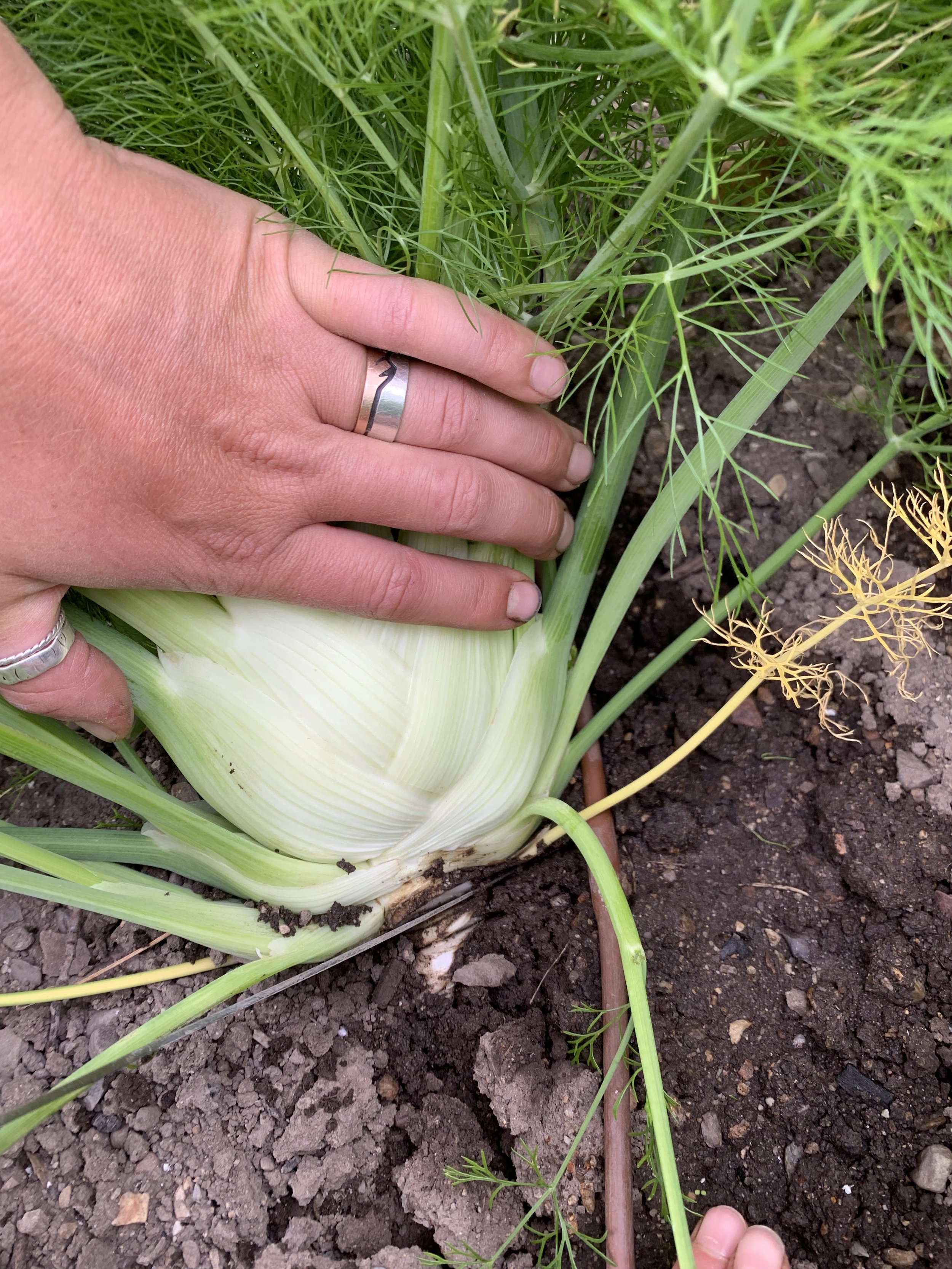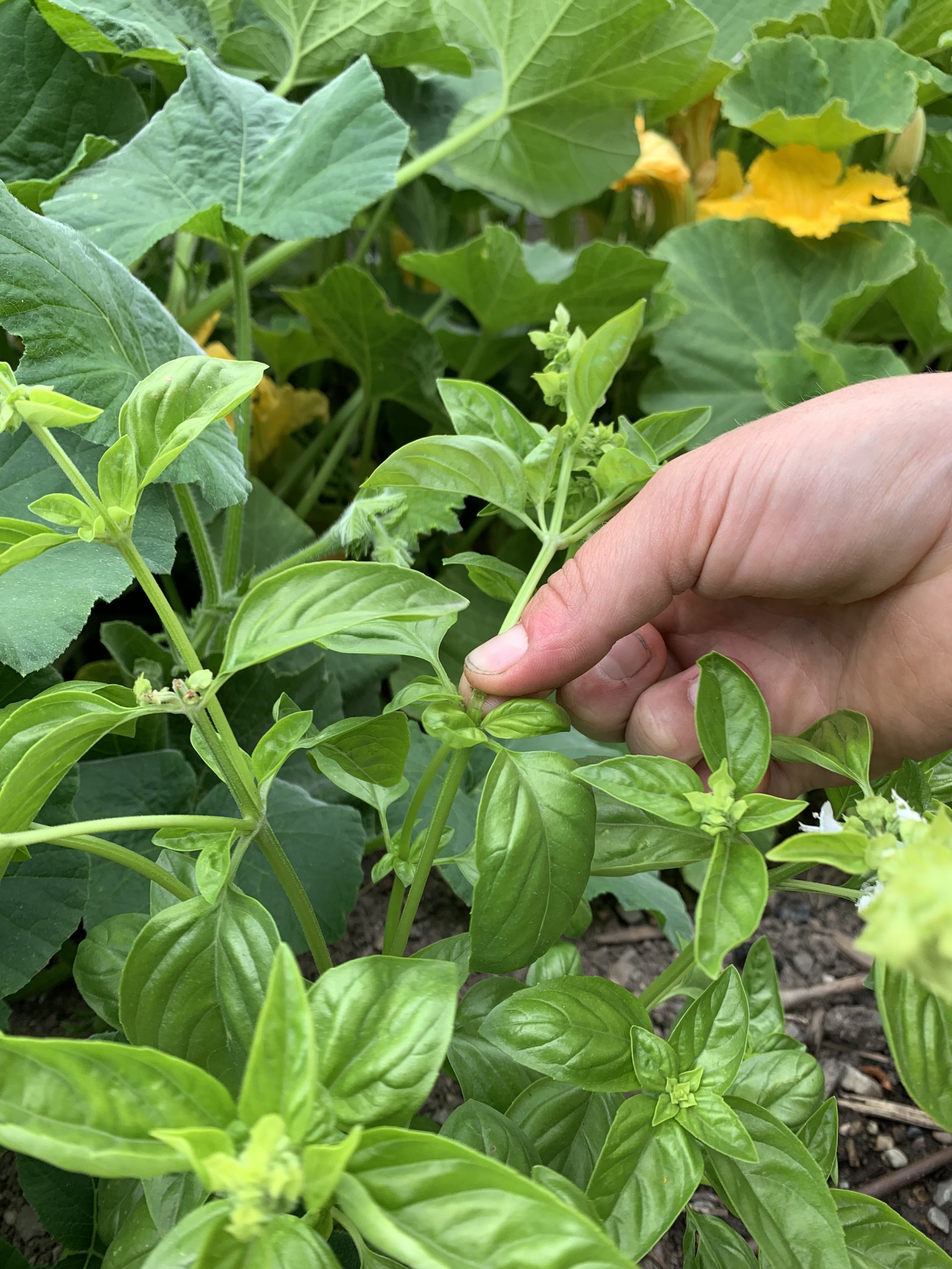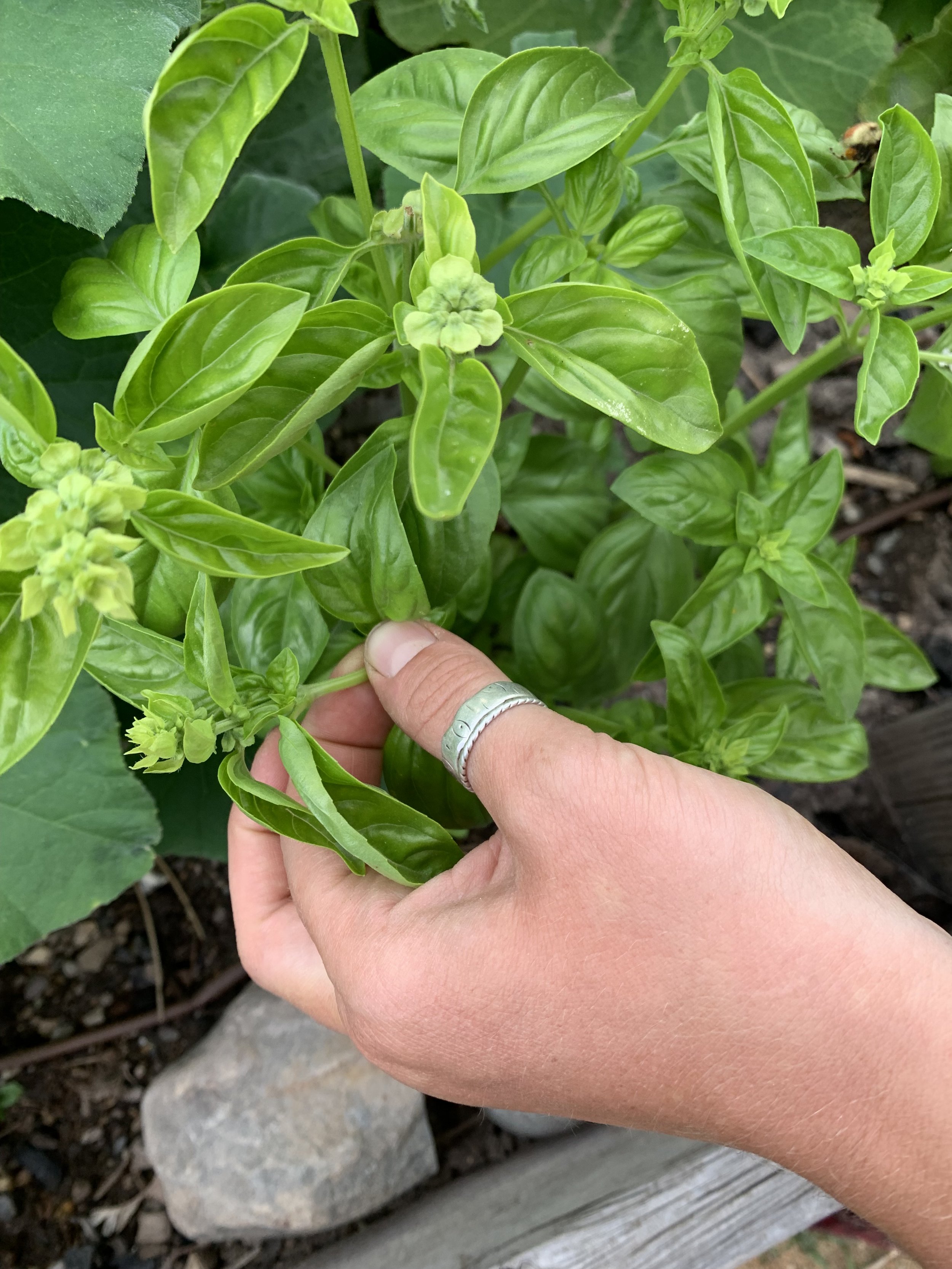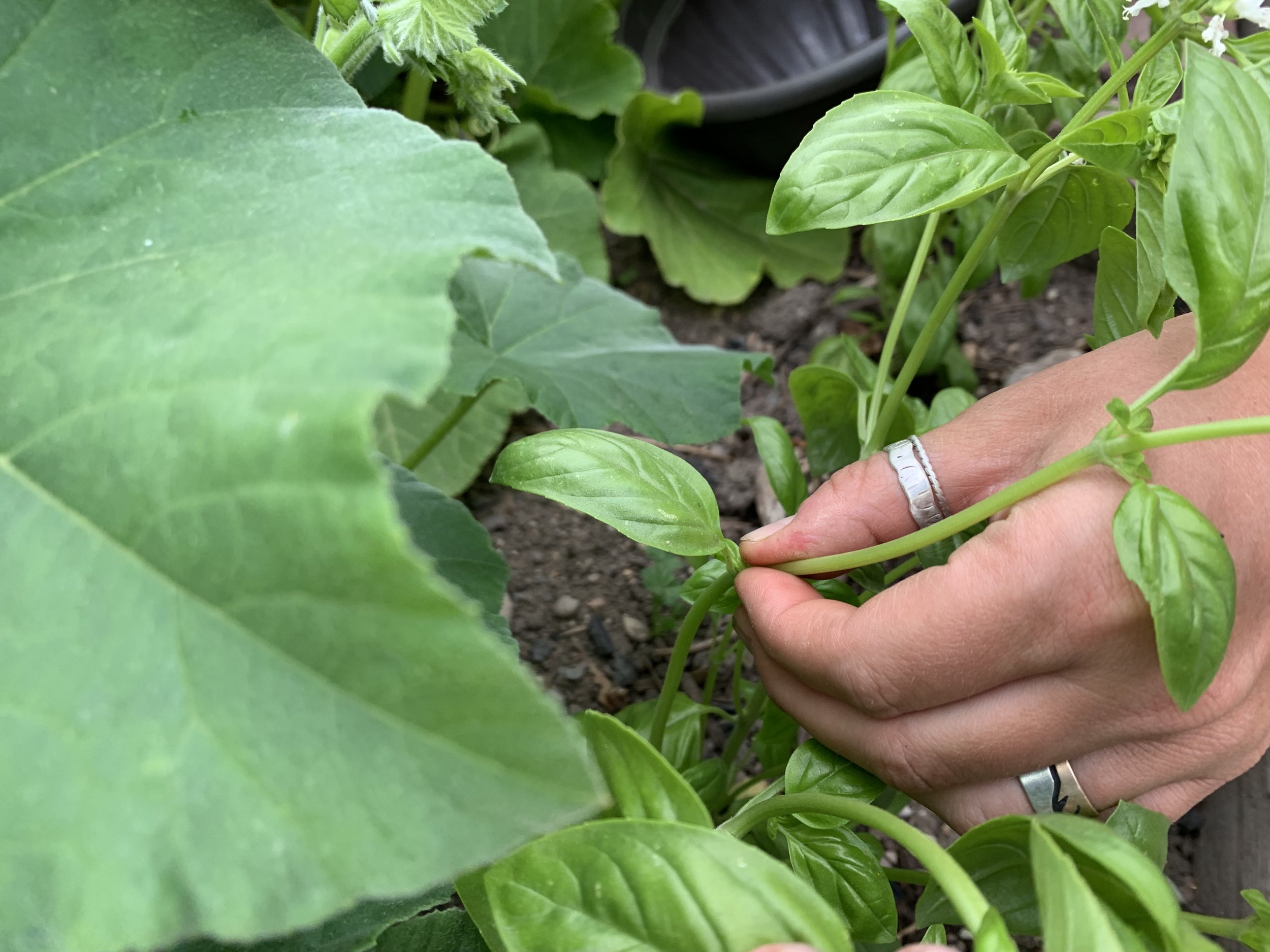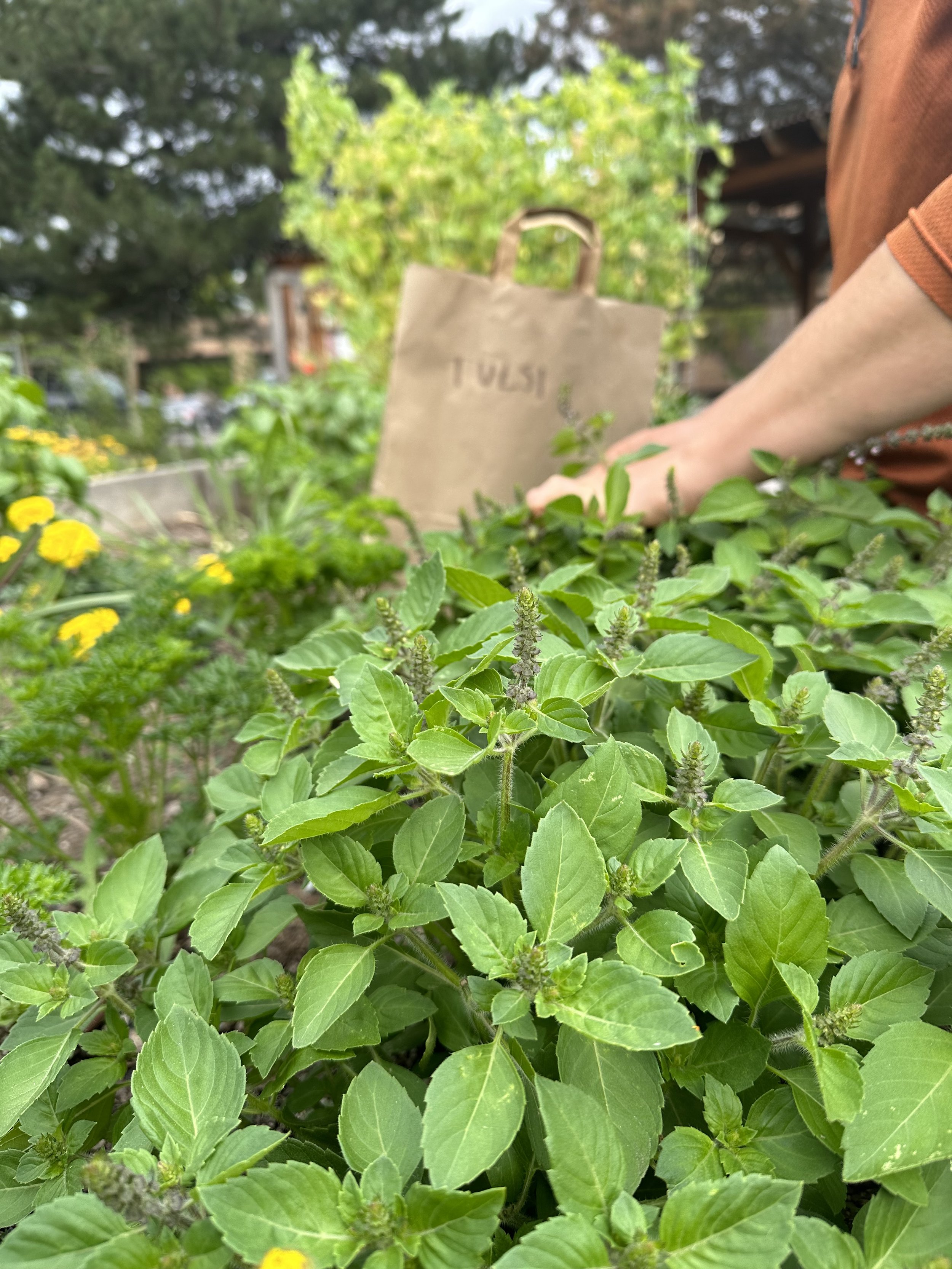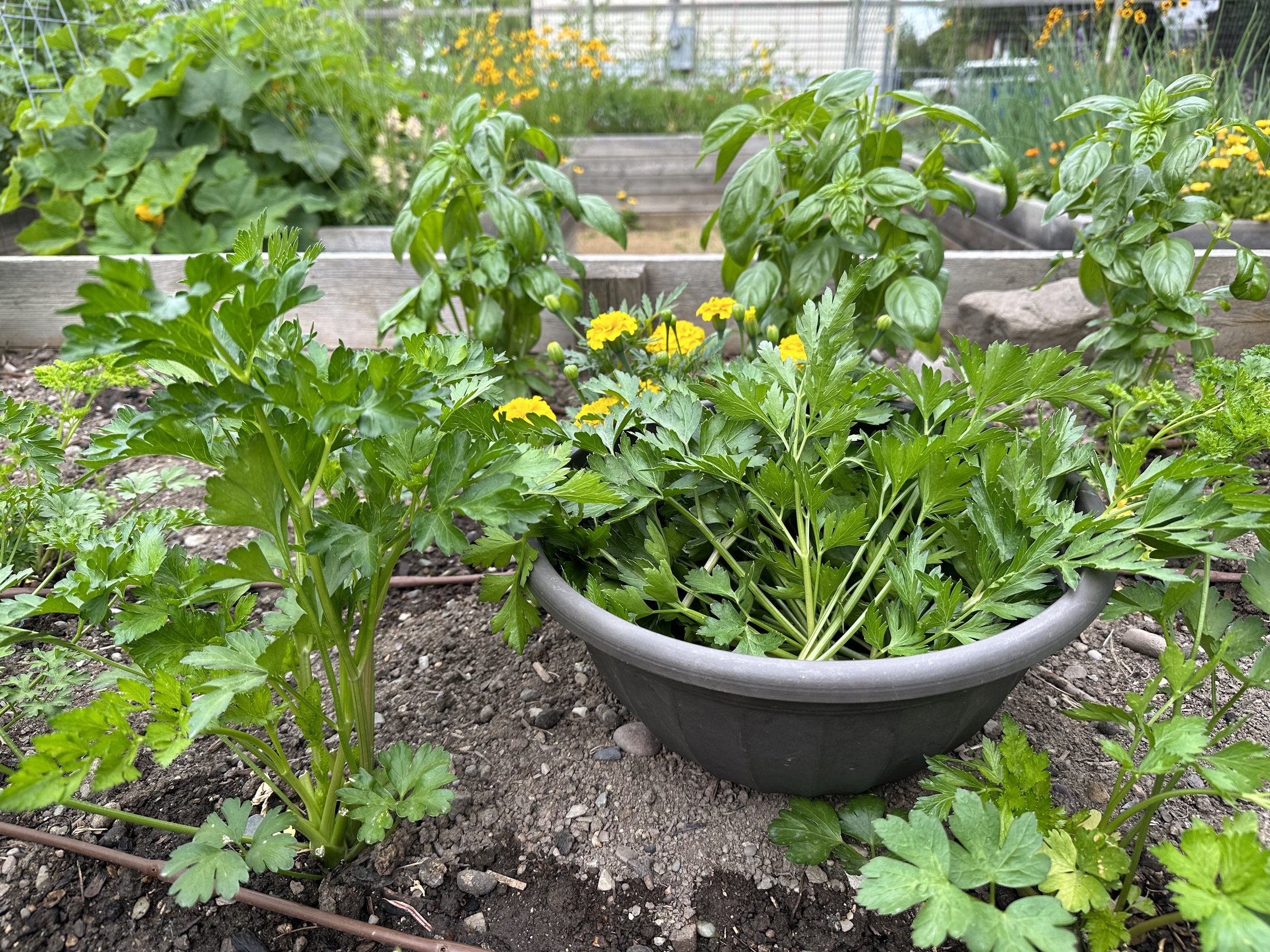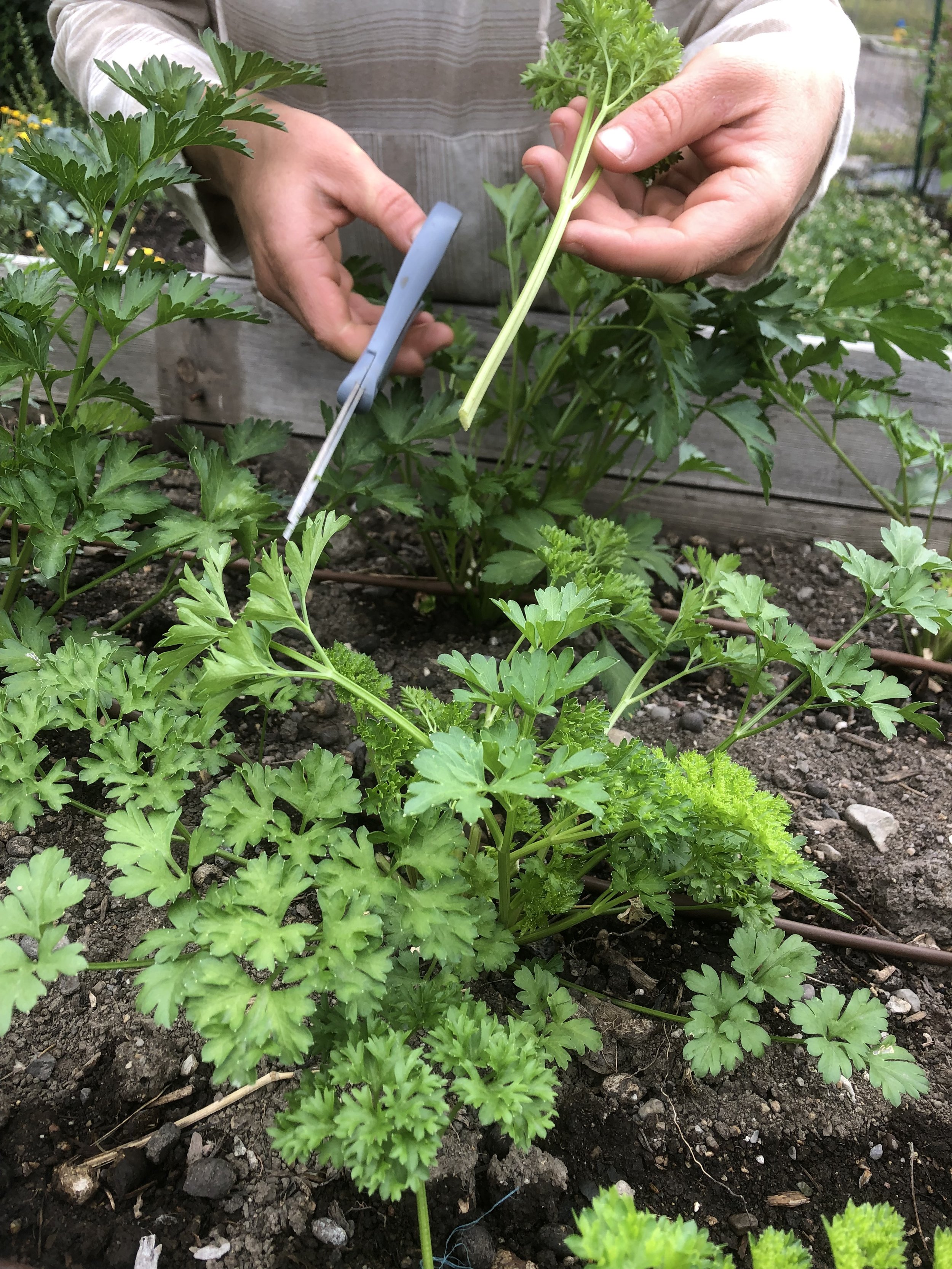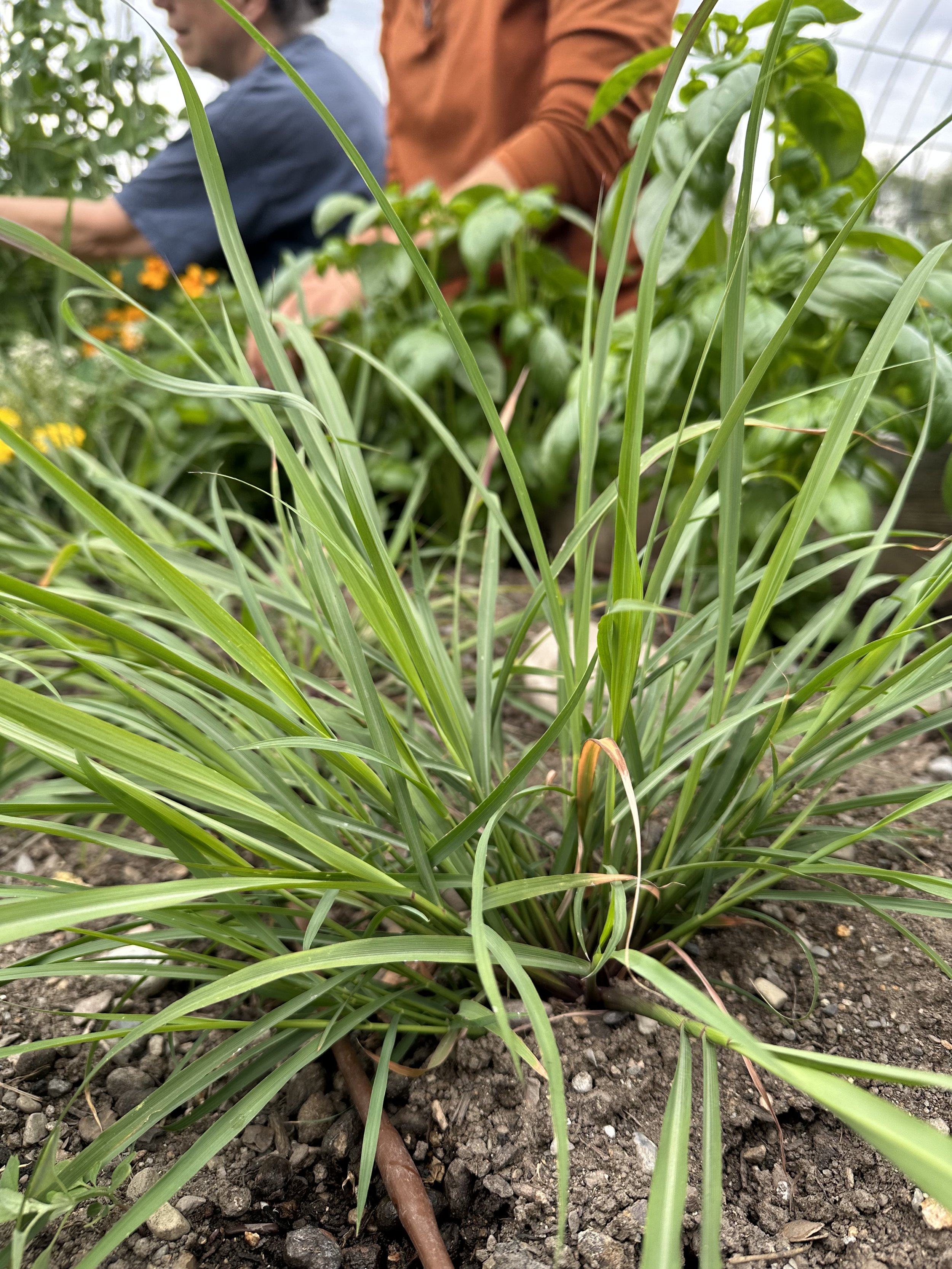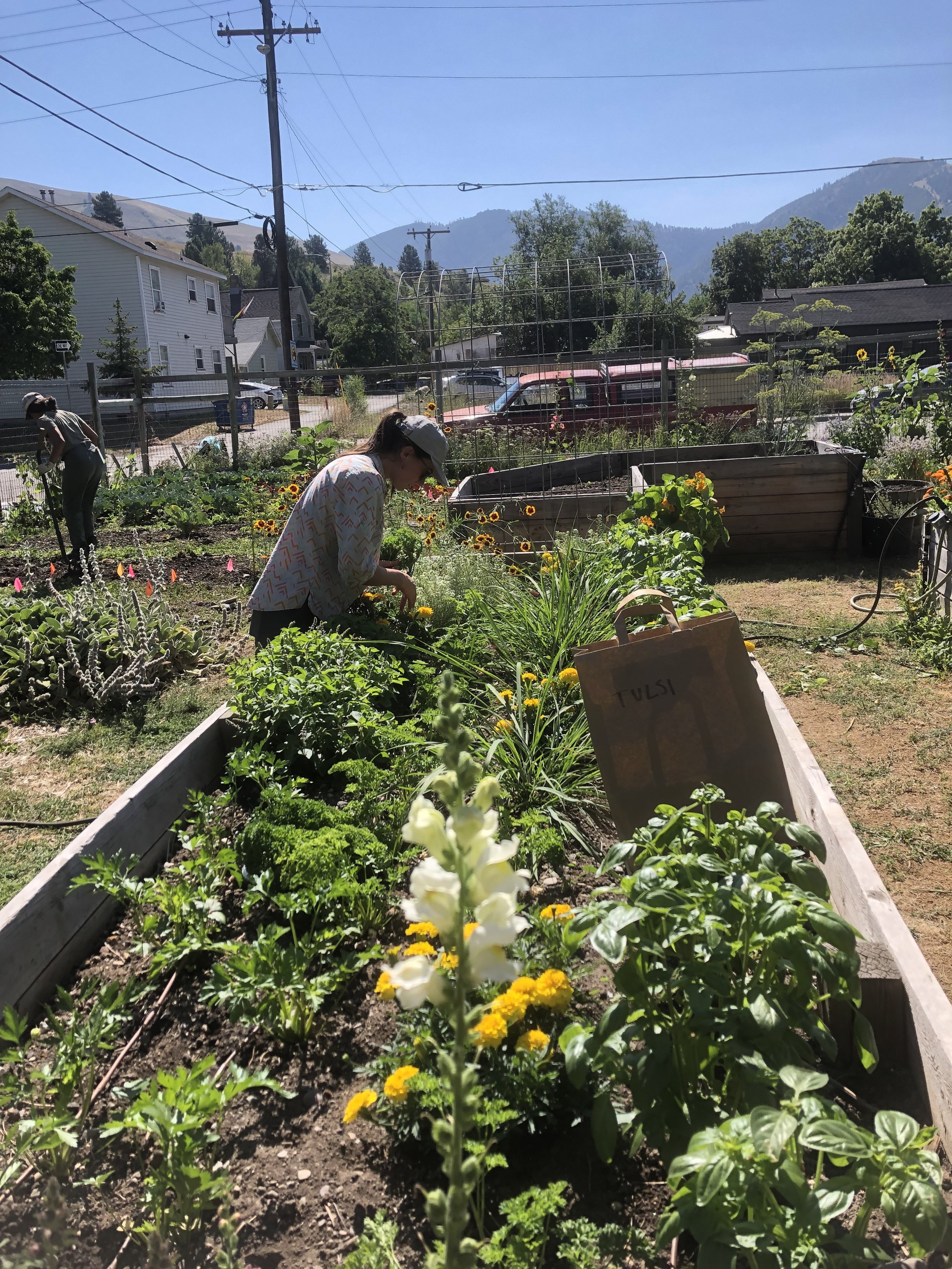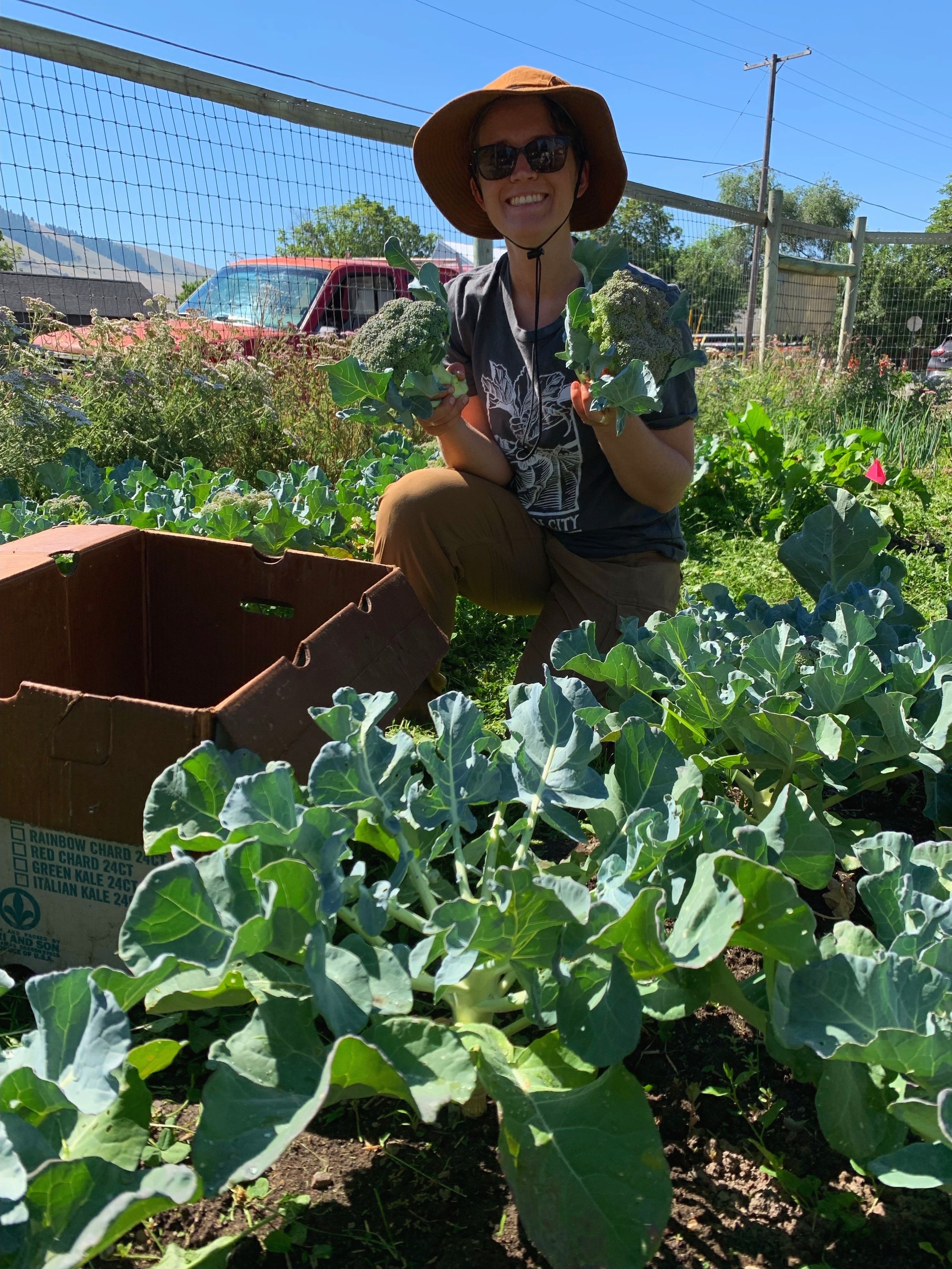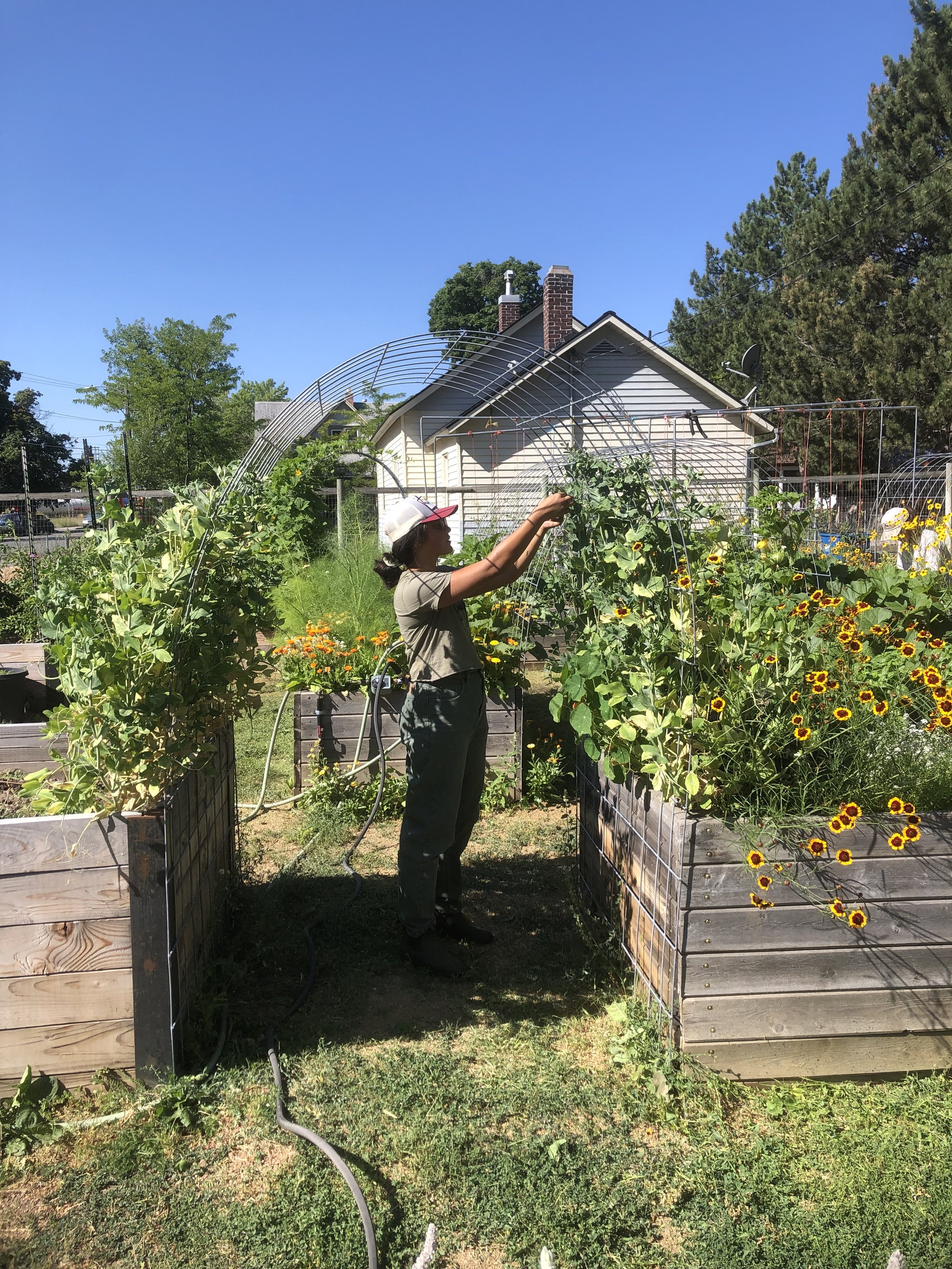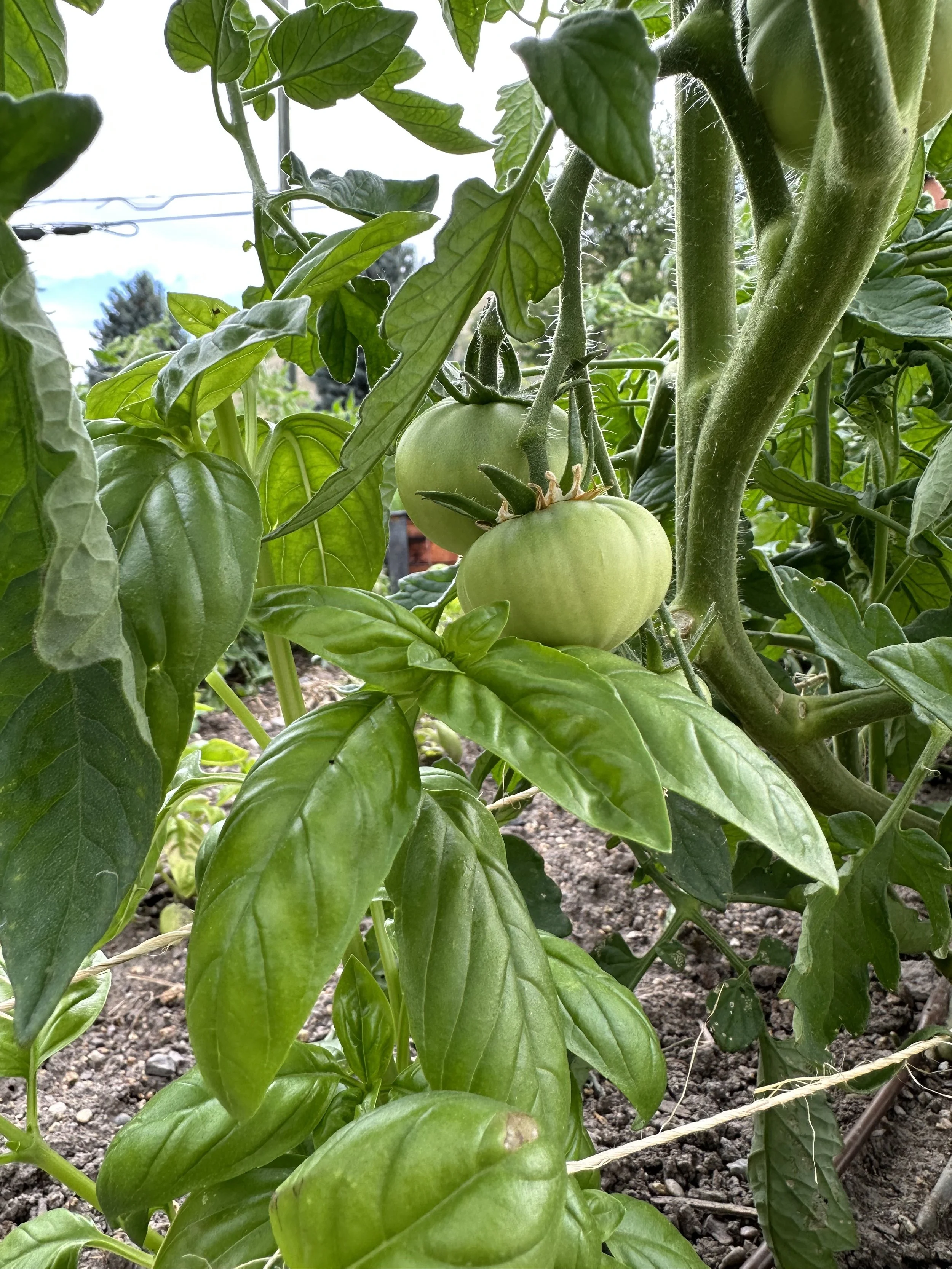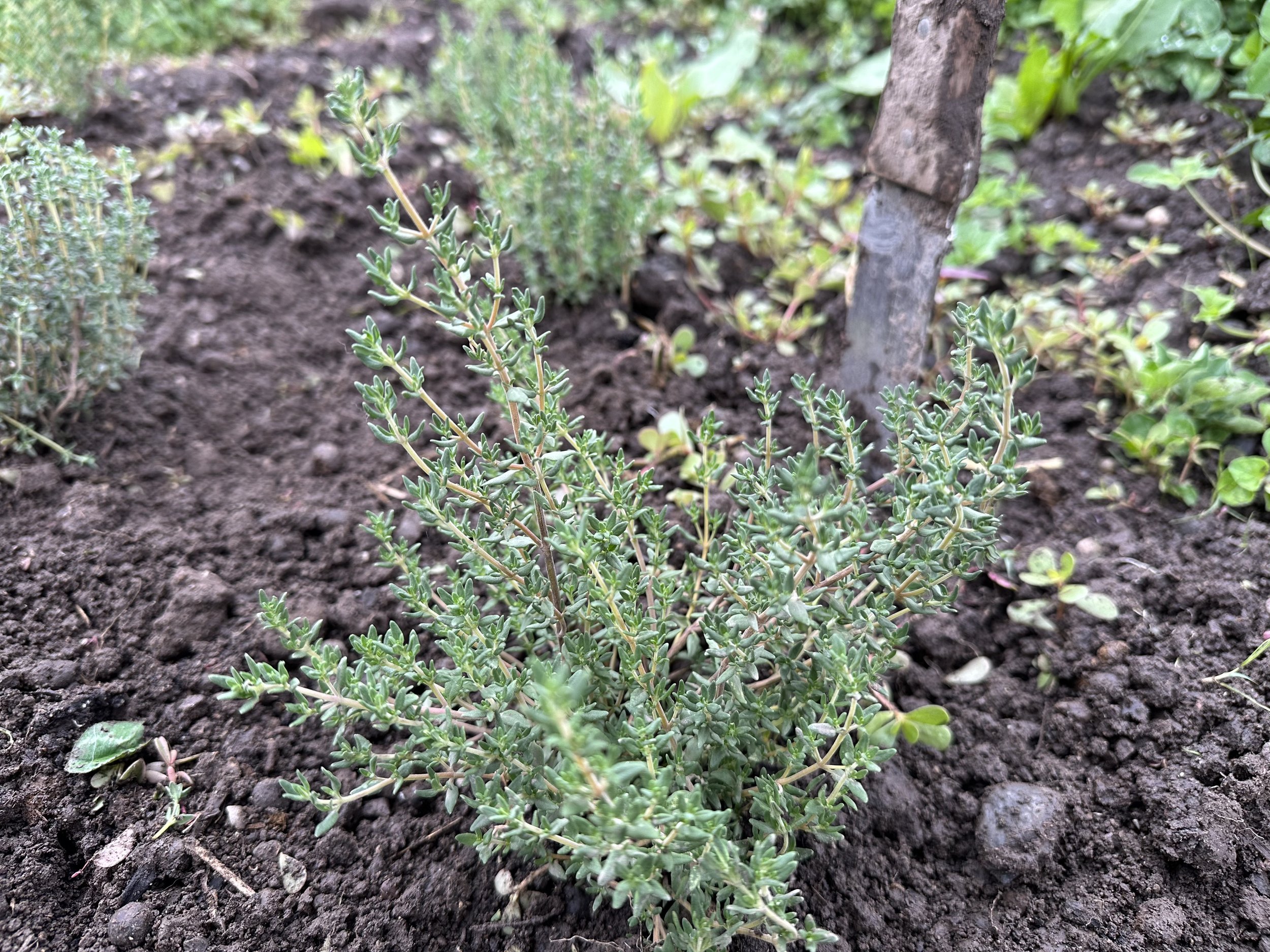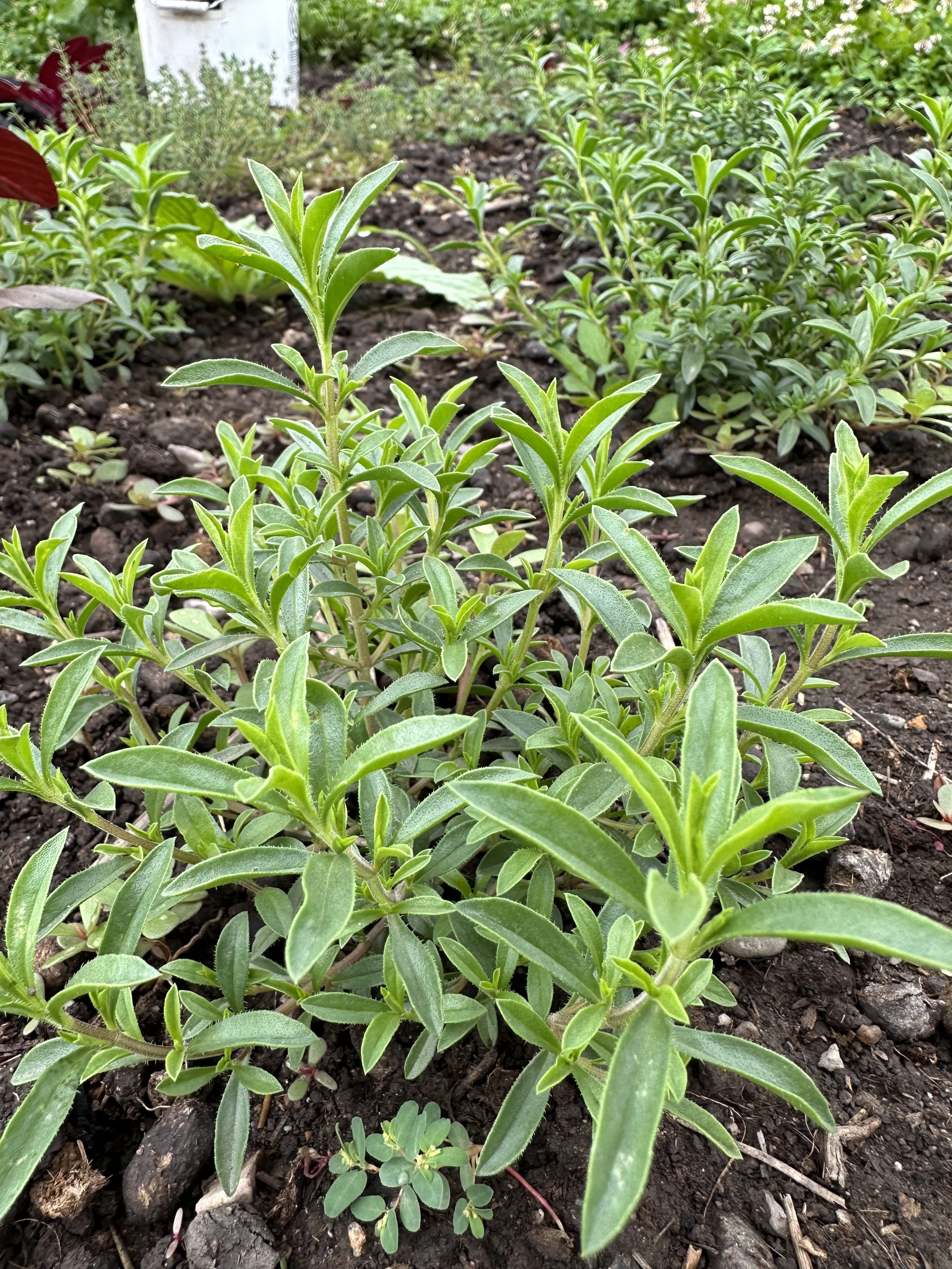Growing Herbs at Providence Garden
Providence Garden: The Space
Spring-time blooms of Catmint and Chives help keep our native bees very happy.
In 2014, Garden City Harvest and Providence St. Patrick Hospital/Foundation agreed to partner in building a therapeutic community garden for Providence Center patients, staff, and the greater Missoula community (check out the location here). The garden is comprised of nine accessible raised beds (both standing and sitting height) that fill the inner portion of the garden surrounded by a perimeter of 24 ground level beds. These beds are all planted with a variety of flowers, herbs, fruits, and veggies. The veggie beds yield about 1,000 pounds of produce per season, most of which is donated to the Missoula Food Bank. Beyond that yield, the space is intentionally planned to not just be visual, but be filled with smells, textures, and tastes, too. All of that adds up to a more accessible and interactive space.
How it Fits
The Providence Hospital Garden is a unique part of the Community Gardens program at Garden City Harvest. Our 10 other community garden sites house over 400 plots that are rented out by individuals and families to grow food while we provide education, resources, maintenance needs, and other support. At the Providence Garden, our staff members have the special opportunity to plan, plant, maintain, and harvest the fruits, veggies, and herbs that fill this therapeutic space. Gardening at Providence not only satisfies our need to dig in the dirt, but also keeps us in time and tune with the growing techniques and problem solving skills that are essential to the successful engagement with and management of our other gardens across town.
Let the Herb Journey BegiN!
Why herbs?
Tomatoes and basil are a common pair of companion plants.
Herbs serve as wonderful additions to gardens and bring many things to the table (pun intended). When deciding what herbs to grow at Providence and where to grow them, I considered four herb superpowers:
Pest deterrents
Pollinator attractants
Sensory experiences: taste, smell, texture, and visual appeal
Culinary enjoyment and excitement!
These factors all informed where I planted herbs in the garden space. For example, I decided to use cilantro and dill as barriers around brassica crops such as broccoli and cauliflower because they both produce strong scents that repel aphids, and dill is known to be a strong attractant for predatory wasps that feed on pests. I planted basil in between tomato plants to save on space, attract pollinators to the tomatoes, and deter pests and fungal infections. If you are interested in learning more about companion planting with herbs or otherwise, check out this webpage for a great informational chart!
In general, herbs prefer full sun but full sun also makes them more susceptible to bolting. I chose slow bolting varieties, and planted the notorious bolter, cilantro, in a more shady area. Despite my attempt at planning, the slow bolting cilantro that I planted in the shade still bolted almost immediately. The good news though is that if your herbs bolt, their flowers provide excellent sources of pollen and nectar for native pollinators, and many of their flowers also develop into seeds (coriander, fennel, dill) that we enjoy in the kitchen!
Perennial vs. Annual herbs
The first step to growing herbs in your garden is to understand which herbs are annuals and perennials in your growing zone. Many herbs that are perennials in warmer climates are annuals in Missoula because they die off during our cold winters. Perennial herbs like thyme and oregano come back year after year, while annual herbs such as basil and parsley (technically a biennial but treated as an annual) die off over the winter. To make matters more confusing, many annual herbs like dill and fennel are excellent at reseeding themselves (just visit the dill jungle at the Northside Community Garden if you don’t believe me!) so they will come back year after year but are not perennials in Missoula.
My first step to planning out the herbs I was going to grow in Providence was to make lists. In any garden space, it is important to create a planting plan that factors in perennial vs. annual growth habits, as they usually have different care requirements such as spacing, watering, harvesting, and mulching.
Perennial herbs that already lived AT Providence Garden
Catmint
Chives
Lavender
Culinary sage
Lovage
Perennial herbs i added
Winter Savory
Thyme
Marjoram
Oregano
Annual herbs That we’re growing this year
Cilantro
Dill
Fennel
Basil: Sweet & Genovese
Parsley: Moss Curled & Flat Leaf
Tulsi (Holy Basil)
Lemongrass
Growing Herbs
Next, I decided which herbs to start in the greenhouse, and which to sow directly in the ground. All of the herbs I decided to grow do fine with transplanting except for dill and cilantro, which do not like their roots disturbed and do better directly seeded in a garden.
Thyme growing happily in the perennial herb bed
Growing Perennial Herbs
Perennial herbs are very slow growing and often have spotty germination, so I planted them in the greenhouse the first week of April and over seeded them in larger celled trays. I ended up with a wonderfully high germination and had to aggressively thin them weekly until they were big enough to separate and transplant into larger pots. When they were large enough to plant outside (not until mid June! So slow!) I once again overplanted the perennial herb bed to account for losing some plants over the season or coming years. If they all thrive, I will transplant them out into other locations in the garden.
For home gardeners without access to a greenhouse growing space for a long period of time, I would suggest buying perennial herb starts at a local nursery. Some perennial herbs like rosemary are so slow to start that if you want to harvest at all within the first year, you will want to buy a start.
In the perennial herb bed, I grouped each herb together for ease of care and harvest. I also factored in the growing habits of the herbs when deciding where to plant them. For instance, I planted oregano along the pathways and in pots because it tends to spread and is an aggressive competitor. For similar growth habit reasons, I decided against planting mint, because I was afraid it would take over the entire garden (go check out the Milwaukee Trail Community Garden mint forest and you’ll see what I mean!) To learn more about growing mints in the garden, check out this blog.
An eclectic bed mixed with annual herbs and flowers holds all kinds of smells, tastes and textures.
Growing Annual Herbs
Like I mentioned above, I started all of my annual herbs in the greenhouse, except for the dill and cilantro. Because annual herbs are easier to germinate and take less time to grow, I started them a little later, (last week of April) did not seed them as heavily, and grew them in a smaller celled tray. Because they are all fairly sensitive to cold temperatures (especially basil!) I waited until after the average last frost date to transplant them outside.
Come enjoy the providence garden and harvest some herbs!
Providence Garden is always open for you to come and enjoy. Please check out our herb beds, rub some leaves between your fingers, and enjoy their unique textures, smells, and tastes. If you would like to harvest some herbs to enjoy fresh or to dry, feel free to carefully grab a few sprigs without pulling out the plant. Check out the photos above for tips on harvesting, and please reach out with any questions.
Please contact me at rye@gardencityharvest.org if you would like to volunteer or utilize the space for meetings or a small gathering.
For some more ideas on how to harvest and use herbs, check out this video of Farmer Caroline Stephens. If you are interested in learning some more about herb folklore, check out this blog.

